Abstract
Taro cultivation in Japan has shown a gradual decline in both harvest yield and cultivation area over the decades due to aging farmers and competition with other crops. However, the 2022 data reflects a notable performance, with a national harvest volume reaching a high of 139,000 tons, supported by efforts to stabilize production through improved techniques. The cultivation area stands at 10,100 hectares, demonstrating efficient land use amidst declining farmland. Saitama leads in shipping volume at 13,700 tons, highlighting its favorable conditions and robust market. Taro remains a key root vegetable, valued for its versatility and cultural importance in Japanese cuisine.
Taro harvest volume (main data).
Taro production in Japan has experienced a significant decline since its peak in 1980, when the national harvest yield reached 459,000 tons. By 2022, this figure had fallen to 30.3% of its peak, reflecting broader agricultural trends such as reduced farmland and an aging farming population. Despite this, taro remains a staple root vegetable, particularly valued in traditional dishes like stews and soups. The decline has been mitigated in part by advancements in cultivation techniques and efforts to promote regional specialties. Today, production is concentrated in areas with suitable climates, such as Saitama, which leads in shipping volume, showcasing regional adaptation and resilience.
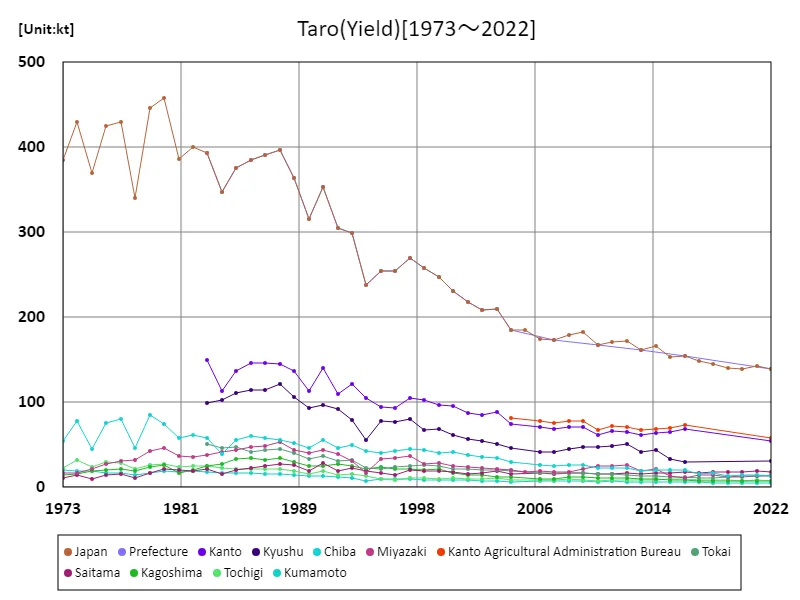

The maximum is 459kt[1980] of Japan, and the current value is about 30.3%
Taro harvest volume (by prefecture).
In 2022, Saitama recorded the highest yield of root vegetables among Japanese prefectures, with 17.9 thousand tons, reflecting its leading role in this agricultural sector. This dominance is attributed to its favorable soil, climate, and efficient farming practices, which have consistently supported high yields. Nationwide, root vegetable production has seen fluctuations due to factors like aging farmers, farmland reduction, and changing consumer demand. However, efforts to maintain production, such as regional branding and technological advancements, have helped stabilize yields in key areas. Saitama’s success highlights the importance of regional adaptation in sustaining agricultural output.
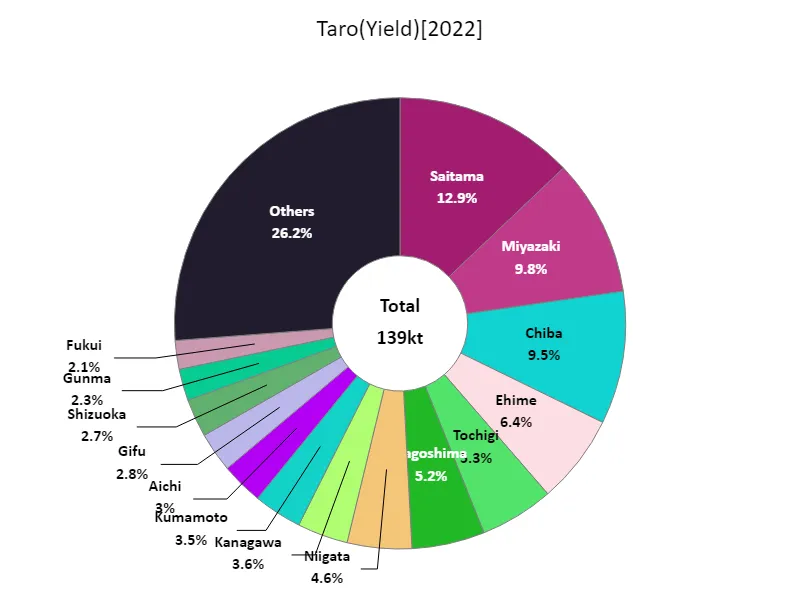

The maximum is 17.9kt of Saitama, the average is 3.02kt, and the total is 139kt
Area planted with taro (main data).
The area planted for taro in Japan has dramatically declined since its peak of 33,200 hectares in 1973, now standing at just 30.4% of that figure in 2022. This reduction reflects broader trends in Japanese agriculture, including farmland conversion, labor shortages, and shifts in dietary habits. Despite this, taro remains an essential crop in traditional Japanese cuisine, valued for its versatility and nutritional benefits. Efforts to sustain production have focused on improving cultivation efficiency and promoting regional specialties. Today, production is concentrated in regions with suitable conditions, demonstrating resilience amidst a challenging agricultural landscape.
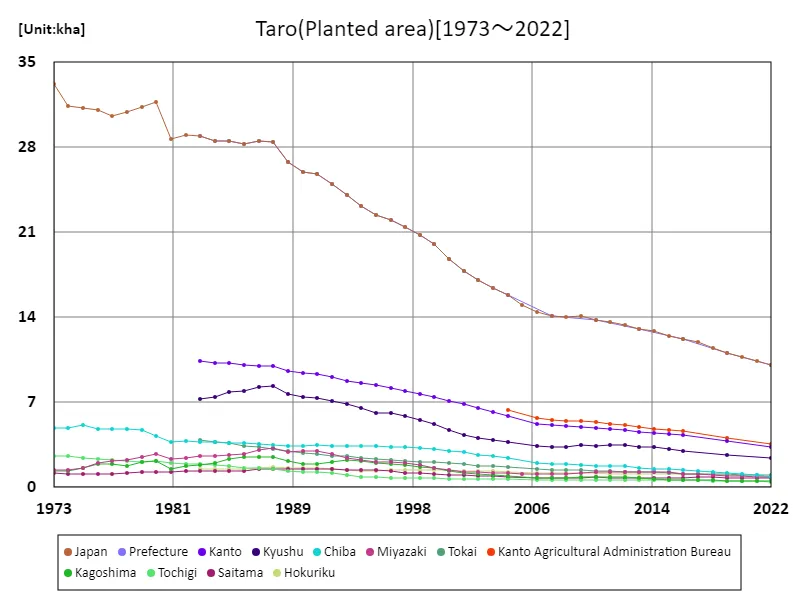

The maximum is 33.2kha[1973] of Japan, and the current value is about 30.4%
Area cultivated with taro (by prefecture).
In 2022, Chiba had the largest area dedicated to root vegetable cultivation in Japan, covering 860 hectares. This reflects the prefecture’s strong agricultural infrastructure and favorable growing conditions, including well-drained soils and a mild climate. Root vegetable cultivation in Japan has seen a gradual decrease in planted area over the decades due to urbanization, aging farmers, and reduced demand. However, regions like Chiba have maintained their prominence through efficient farming practices and focus on high-demand crops. These trends highlight the importance of regional specialization in sustaining production amid nationwide challenges in agriculture.
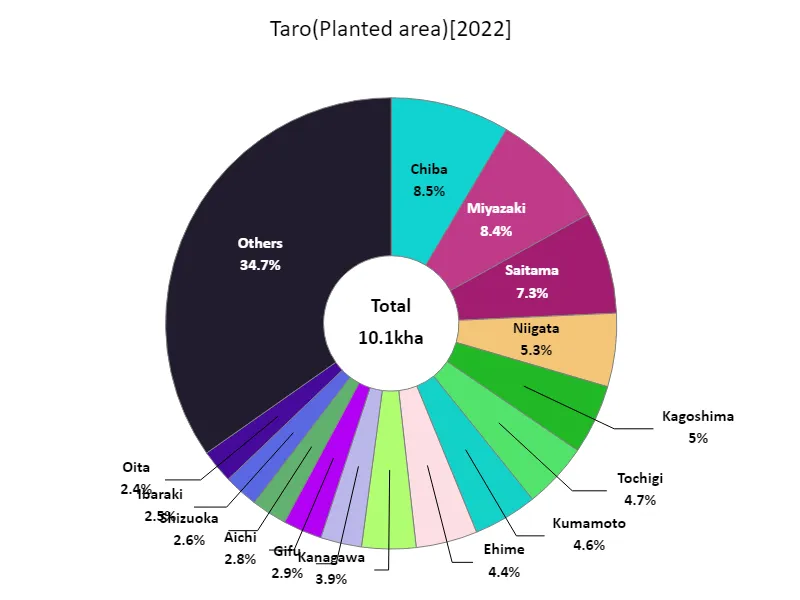

The maximum is 860ha of Chiba, the average is 219ha, and the total is 10.1kha
Satoimo shipping volume.
In 2022, Saitama led Japan in taro shipping volume at 13.7 thousand tons, significantly exceeding the national average of 2.05 thousand tons and contributing to a total shipment of 94.3 thousand tons. Saitama’s dominance reflects its efficient cultivation techniques and strong market networks. Nationwide, taro shipping volumes have declined over the years due to reduced planting areas and an aging agricultural workforce. However, key regions like Saitama have adapted through improved productivity and branding strategies, ensuring stable supply. Taro remains a vital crop in Japan, valued for its role in traditional dishes and cultural significance.
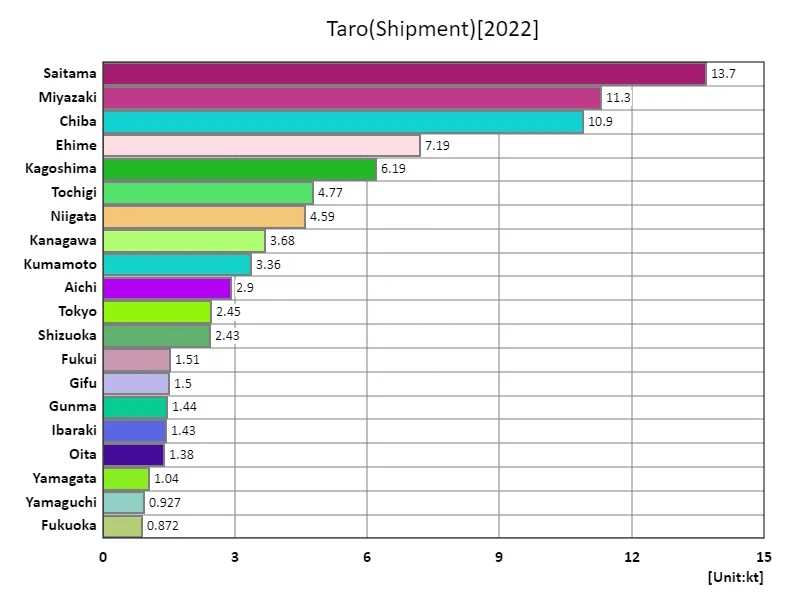

The maximum is 13.7kt of Saitama, the average is 2.05kt, and the total is 94.3kt
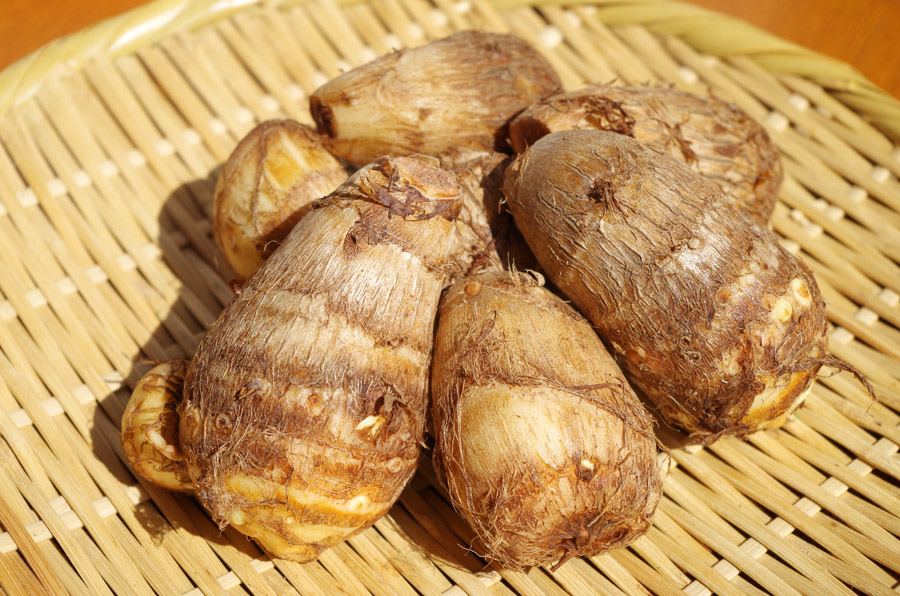


Comments